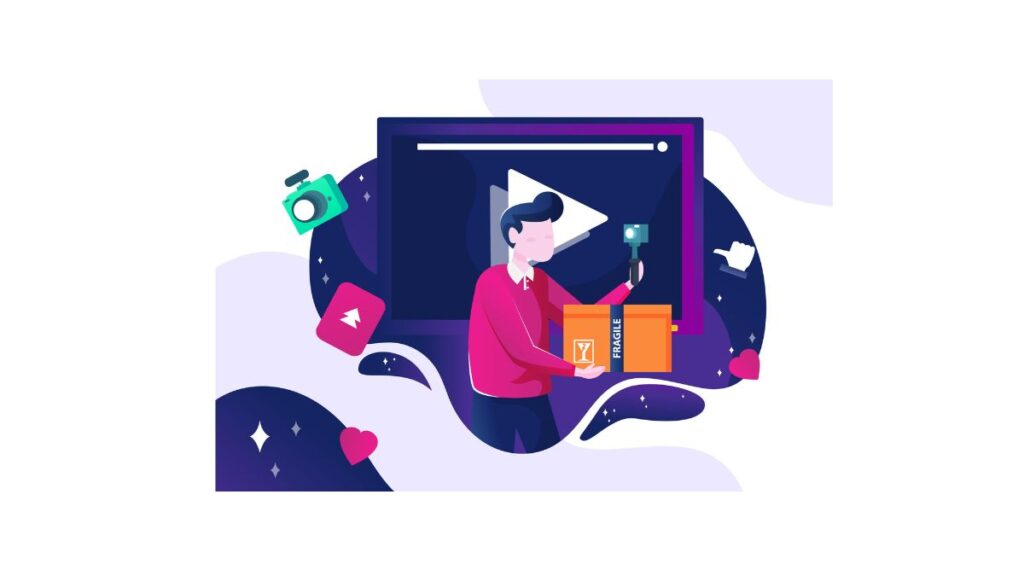Introduction
In less than two decades, YouTube has transformed from a simple video-sharing platform into one of the most influential digital ecosystems in human history. What began as a place to upload home videos and silly clips has evolved into a global powerhouse for entertainment, education, marketing, politics, and personal branding. YouTube is not just a website—it’s a cultural phenomenon, a business tool, and for many, a full-time career.
With over 2.7 billion logged-in monthly users as of 2025, YouTube is the second most-visited website in the world, just behind Google (its parent company). Whether you’re watching tutorials, documentaries, music videos, or vlogs, chances are you’ve interacted with YouTube in some meaningful way. This article dives deep into the YouTube ecosystem—its origins, evolution, monetization systems, cultural impact, controversies, and future potential.
The Birth of YouTube
YouTube was founded in February 2005 by Steve Chen, Chad Hurley, and Jawed Karim—three former PayPal employees. Frustrated by the difficulty of sharing videos online, they envisioned a platform where users could upload, view, and share videos without the need for advanced technical skills or complex file conversions.
The first-ever YouTube video, “Me at the zoo”, was uploaded by Jawed Karim on April 23, 2005. It’s just 18 seconds long, but it marks the beginning of a revolution.
By November 2006, YouTube had grown so rapidly that Google acquired it for $1.65 billion in stock—a decision that would later prove to be one of the most valuable acquisitions in tech history.
How YouTube Works
Uploading and Watching Content
YouTube’s model is deceptively simple: users upload videos, and viewers watch them. But behind this basic interface lies a highly sophisticated infrastructure:
-
Algorithms: YouTube’s recommendation engine determines what videos appear on your homepage and in your “Up Next” queue. It factors in your watch history, likes, subscriptions, and engagement.
-
Search Functionality: As part of Google, YouTube has advanced search capabilities, making it easier for users to discover content.
-
Monetization Systems: Creators can earn money through ads, memberships, Super Chats, affiliate links, and more.
Content Categories
YouTube hosts an incredibly diverse range of video content, including:
-
Entertainment: Comedy sketches, music videos, web series.
-
Education: Tutorials, explainer videos, documentary-style content.
-
News & Commentary: Independent journalists, political commentary, daily updates.
-
Gaming: Live streams, gameplay walkthroughs, reviews.
-
Vlogs & Lifestyle: Daily vlogs, routines, personal updates.
-
ASMR & Relaxation: Meditation, ambient music, sensory videos.
YouTube’s Ecosystem of Creators
The Rise of Influencers
YouTube is one of the key platforms that enabled the rise of content creators or YouTubers. These individuals have used the platform not only to entertain or educate but also to build personal brands and businesses.
Some notable creators include:
-
MrBeast (Jimmy Donaldson): Known for his philanthropy and viral stunts.
-
PewDiePie (Felix Kjellberg): Former most-subscribed channel, known for gaming and commentary.
-
Emma Chamberlain: Lifestyle vlogger and brand collaborator.
Monetization: How YouTubers Make Money
YouTube’s Partner Program (YPP) allows creators to earn money through various streams:
-
Ad Revenue: Ads shown before, during, or beside videos.
-
Channel Memberships: Monthly subscriptions for exclusive content.
-
Super Chat & Super Stickers: Real-time donations during livestreams.
-
Merchandise Shelf: Integrated storefronts for selling branded products.
-
YouTube Premium Revenue: A portion of subscription fees from YouTube Premium users.
To qualify for YPP, creators must have at least 500 subscribers and 3,000 watch hours in the past 12 months (as of 2025’s policy updates).
The YouTube Algorithm: A Double-Edged Sword
YouTube’s algorithm is a black box of machine learning models designed to maximize watch time and user engagement. It dictates what content goes viral and which creators gain visibility.
How It Works
-
Click-through rate (CTR): Do people click on the thumbnail?
-
Watch time: Do they watch the whole video?
-
Engagement: Likes, shares, comments, and subscriptions.
Controversies Around the Algorithm
While powerful, the algorithm has faced criticism for:
-
Promoting Extremism: Pushing viewers toward radical content.
-
Burnout Culture: Creators feel pressured to constantly produce content to stay relevant.
-
Favoring Long-form Content: Smaller creators with shorter videos often struggle to get discovered.
YouTube and the Creator Economy
YouTube has become a pillar of the creator economy, a digital business landscape where individuals monetize their creativity directly.
According to reports, YouTube contributed over $35 billion to the global economy in 2023 alone through ad revenue, jobs, and ancillary businesses.
Creators now hire editors, writers, thumbnail designers, and marketing teams, transforming solo ventures into full-blown media companies.
Educational Powerhouse
While YouTube is often associated with entertainment, it has quietly become one of the most powerful learning platforms in the world.
From physics to finance, millions of users rely on YouTube for:
-
Free online courses (Khan Academy, CrashCourse)
-
How-to videos (DIY, cooking, coding)
-
Exam prep (SAT, GMAT, UPSC, NEET)
-
Language learning (with native speaker content and subtitles)
In many parts of the world, where traditional education is inaccessible, YouTube serves as a democratizing force, making knowledge available to anyone with an internet connection.
YouTube in Politics and Society
YouTube has become a powerful tool for political discourse, activism, and even misinformation.
Positive Impact
-
Grassroots Movements: Social movements like Black Lives Matter gained momentum with user-uploaded content.
-
Political Commentary: Independent analysts offer alternative perspectives to mainstream media.
-
Transparency: Footage from protests, conflicts, and debates can be uploaded without censorship.
Misinformation and Content Moderation
YouTube has also been a vector for conspiracy theories, fake news, and dangerous health advice, especially during the COVID-19 pandemic. The platform has responded with:
-
Stricter content guidelines
-
Fact-check labels
-
De-monetization of harmful content
Balancing free speech with responsible content moderation remains an ongoing challenge.
Shorts, Livestreams, and New Features
In response to competitors like TikTok and Twitch, YouTube has diversified its format offerings:
YouTube Shorts
Launched in 2020, Shorts is YouTube’s vertical, short-form video feature. With over 70 billion daily views, it’s become a dominant force in mobile content consumption.
Creators now integrate Shorts into their strategy to:
-
Reach new audiences
-
Test content ideas
-
Promote long-form videos
Livestreaming
YouTube Live supports everything from gaming streams to real-time Q&As. It’s also used by institutions for:
-
Online classes
-
Religious services
-
Corporate announcements
Features like Super Chat and real-time polls enhance audience engagement.
YouTube for Businesses and Brands
YouTube is not just for creators and viewers—it’s a goldmine for businesses.
Marketing Opportunities
-
Video Advertising: In-stream, discovery, bumper, and display ads.
-
Brand Channels: Businesses can host tutorials, product demos, testimonials.
-
Influencer Collaborations: Partnering with creators for product placements.
Video content increases brand recall and conversion rates, making YouTube one of the most effective platforms for digital marketing.
YouTube SEO
Ranking on YouTube requires optimization just like with Google:
-
Use relevant keywords in titles and descriptions
-
Add accurate captions and tags
-
Create custom thumbnails
-
Encourage engagement
Controversies and Challenges
YouTube is not without its fair share of controversies:
-
Demonetization: Often dubbed the “Adpocalypse,” changes in advertiser policies have left many creators without income.
-
Content Strikes: Over-zealous enforcement of copyright or community guidelines can lead to unjust strikes or bans.
-
Child Safety: Videos targeting children have raised ethical concerns about exploitation and data privacy.
-
Shadowbanning and Censorship: Some creators allege that their content is being suppressed without explanation.
YouTube continues to update its terms of service and enforcement policies, but the platform is under constant scrutiny from both creators and regulatory bodies.
The Future of YouTube
YouTube shows no signs of slowing down. Here’s where it’s heading:
Artificial Intelligence and Personalization
Expect even more personalized recommendations powered by AI. Tools for creators like auto-editing, dubbing, and thumbnail generation will become more sophisticated.
Multi-language Support
YouTube is working on automated translation and dubbing tools to help creators reach global audiences.
Integration with Shopping
Shoppable videos and integrated product tags are turning YouTube into a hybrid of video content and e-commerce.







